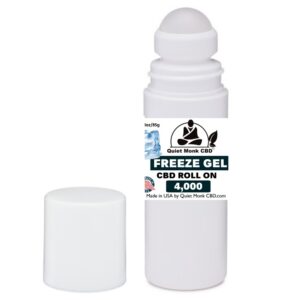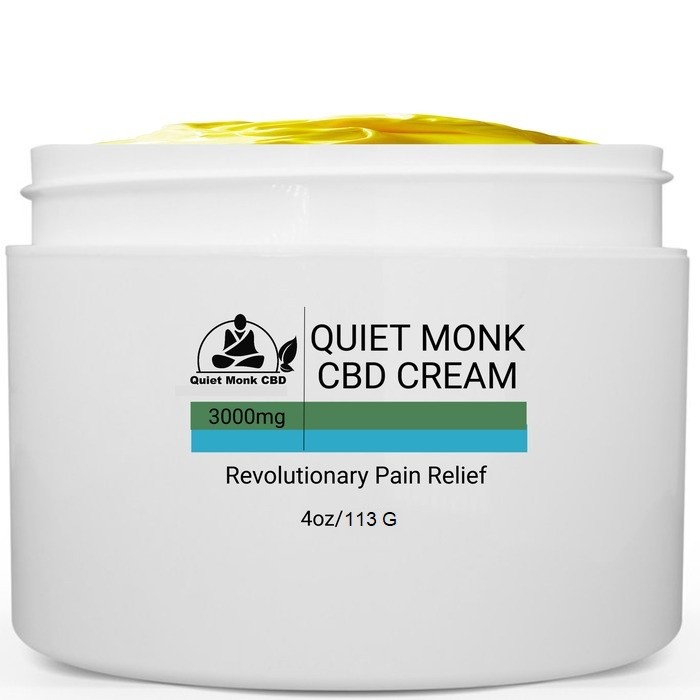
Shin splints, also known as medial tibial stress syndrome, is a common overuse injury that causes pain along the shin bone (tibia). It is often experienced by athletes or individuals who engage in high-impact activities such as running, jumping, or dancing. If left untreated, shin splints can lead to more severe injuries such as stress fractures.
The main cause of shin splints is repetitive stress on the shin bone and surrounding tissues, which can be caused by sudden increases in activity, flat feet, worn-out or improper footwear, or anatomical abnormalities. Other contributing factors may include muscle imbalances, weak core or hip muscles, or training on hard surfaces.
Symptoms of shin splints include pain and tenderness along the inner part of the shin bone, swelling, and difficulty walking or running. Diagnosis of shin splints is typically based on a physical exam and medical history, but imaging tests such as X-rays or MRI may be necessary to rule out other conditions.
The primary treatment for shin splints is rest and ice to reduce inflammation and pain. Other treatment options may include stretching and strengthening exercises, using proper footwear and orthotics, physical therapy, and in severe cases, surgery. Recently, there has been an increase in the use of CBD cream for pain relief, including for shin splints.
CBD cream is a topical product that contains cannabidiol (CBD) extract from the cannabis plant. It is often used for pain relief due to its anti-inflammatory and analgesic properties. When applied to the skin, CBD cream interacts with the body’s endocannabinoid system, which helps regulate pain and inflammation.
While there is limited research on the specific use of CBD cream for shin splints, it is believed that it may help relieve pain and inflammation in the affected area. Some potential benefits of using CBD cream for shin splints include reducing pain and discomfort, promoting faster healing, and providing a natural alternative to traditional pain medications.
Before using CBD cream for shin splints, it is essential to consult with a doctor, especially if you are taking any medications or have underlying health conditions. While CBD is generally considered safe, there may be potential risks or side effects, such as drowsiness, dry mouth, or interactions with other medications.

To use CBD cream for shin splints, follow these steps:
- Apply topically to the affected area, massaging it into the skin.
- Follow the recommended dosage instructions on the product label.
- Consult with a doctor before use, especially if you are pregnant, breastfeeding, or have any medical conditions.
In conclusion, while more research is needed to fully understand the effects of CBD cream on shin splints, it may offer potential benefits for pain relief and promoting healing. As with any new treatment, it is important to consult with a healthcare professional before use.
Key Takeaways:
Resting and icing the affected area can help alleviate shin splints. Using Quiet Monk CBD cream may offer potential benefits for pain relief in shin splints. Consulting with a doctor and following recommended dosage instructions is important when using CBD cream for shin splints.
What are Shin Splints?
Shin splints are a common injury characterized by pain along the shinbone (tibia). They often occur due to overuse or repetitive stress on the lower legs. Athletes, runners, and dancers are particularly prone to this condition.
Shin splints can be caused by factors such as improper footwear, sudden changes in activity level, or running on hard surfaces. The symptoms include pain, tenderness, and swelling along the shinbone.
Rest, ice, compression, and elevation (RICE) therapy, as well as proper footwear and gradual training progression, are usually recommended for treating shin splints.
What Causes Shin Splints?
Shin splints, also known as medial tibial stress syndrome, are typically caused by repetitive stress on the shinbone and surrounding muscles. This stress can be a result of activities such as running, jumping, or dancing. Other contributing factors to shin splints include wearing improper footwear, running on hard surfaces, and having weak muscles. Additionally, overpronation, which is the excessive inward rolling of the foot, can also lead to increased strain on the shins. By understanding the causes of shin splints, individuals can take preventive measures such as wearing appropriate footwear, stretching before exercising, and gradually increasing the intensity and duration of physical activity.
What Are the Symptoms of Shin Splints?
Shin splints are often identified by the presence of pain and tenderness along the shin bone. These symptoms may include a dull or achy pain in the lower leg, particularly during physical activity. Swelling and soreness may also be experienced. If you are experiencing these symptoms, it is important to take a break from physical activity, apply ice to the affected area, and avoid any activities that may worsen the pain. Incorporating stretching and strengthening exercises into your routine can also help prevent shin splints. A helpful tip is to wear appropriate footwear and gradually increase the intensity and duration of your workouts to reduce the risk of developing shin splints.
How Are Shin Splints Diagnosed?
Shin splints can be diagnosed through a combination of medical history, physical examination, and imaging tests.
- Medical history: The doctor will ask about your symptoms, activities, and any previous injuries.
- Physical examination: The doctor will examine your legs and feet for tenderness, swelling, or any abnormalities.
- Imaging tests: X-rays, bone scans, or MRI may be ordered to rule out stress fractures or other underlying conditions.
Pro-tip: Rest and ice your shins, wear proper footwear, and gradually increase your exercise intensity to prevent shin splints.
What is the Treatment for Shin Splints?
Shin splints are a common injury that affects many athletes and active individuals. While there are various treatments available, one option that has gained popularity in recent years is CBD cream. However, before exploring this potential treatment, it’s important to understand the standard methods for managing shin splints. In this section, we will discuss the different aspects of treatment, including rest and ice, stretching and strengthening exercises, proper footwear and orthotics, and physical therapy. By understanding these options, we can better evaluate the effectiveness of CBD cream for shin splints.
Some of our Best cbd creams for swollen feet
1. Rest and Ice
- Rest: Take a break from any activities that may worsen shin splints in order to give the affected area time to heal.
- Ice: Apply ice to reduce inflammation and pain. You can use a cold pack or wrap ice in a cloth and apply it for 15-20 minutes several times a day.
Remember, rest and ice are just the initial steps in treating shin splints. It’s important to address the underlying causes, such as improper footwear or muscle imbalances, to prevent future occurrences. Consult with a healthcare professional for a comprehensive treatment plan.
2. Stretching and Strengthening Exercises
Stretching and strengthening exercises are crucial for managing and preventing shin splints. Here are some steps to incorporate into your routine:
- Begin with gentle calf stretches, holding for 30 seconds on each leg.
- Perform toe raises by standing on your tiptoes and then lowering back down. Repeat 10-15 times for each leg.
- Strengthen your shin muscles by doing toe taps. While sitting on a chair with your feet flat on the ground, lift your toes up and down. Aim for 10-15 reps on each leg.
- Add calf raises to your routine to strengthen the muscles in your lower legs. Stand with your feet hip-width apart and rise up onto your toes. Lower back down and repeat for 10-15 reps.
- Incorporate lateral leg exercises like side lunges or lateral hops to improve stability and reduce strain on the shins.
Remember to always consult with a healthcare professional before starting any exercise program, especially if you have existing shin splints or any other medical condition.
3. Proper Footwear and Orthotics
Proper footwear and orthotics are essential in managing and preventing shin splints. Here are some steps to consider:
- Choose supportive shoes: Opt for athletic shoes with good arch support and cushioning to absorb shock.
- Get fitted: Visit a specialty running store for a professional shoe fitting to find the right size and style for your foot type.
- Consider using orthotics: If you have abnormal foot mechanics, orthotic inserts can provide additional support and stability.
- Replace worn-out shoes: Regularly replace your shoes to maintain optimal support and cushioning.
- Gradual transition: When transitioning to new footwear or orthotics, gradually increase usage to allow your body to adapt.
4. Physical Therapy
Physical therapy plays a crucial role in the treatment of shin splints. Here are the steps involved in a typical physical therapy program:
- Assessment: A physical therapist evaluates the condition and identifies contributing factors.
- Restoration of mobility: Targeted exercises are prescribed to improve flexibility and range of motion.
- Strengthening: Specific exercises are designed to strengthen the muscles surrounding the shin to provide better support.
- Correction of biomechanics: Gait analysis helps identify any abnormalities in movement and correct them through exercises and techniques.
- Education: Patients are educated on proper footwear selection, running techniques, and appropriate warm-up and cool-down routines.
Physical therapy for shin splints has been a practiced technique for decades, constantly evolving with advancements in research and technology. It has successfully aided countless athletes and fitness enthusiasts in recovering from shin splints and preventing future occurrences, allowing them to return to their activities with improved performance and without pain.

What is CBD Cream?
CBD cream is a topical product infused with cannabidiol (CBD), a compound derived from the cannabis plant. This cream is commonly used for pain relief and reducing inflammation. It works by interacting with the body’s endocannabinoid system, which is responsible for regulating various functions such as pain perception and immune response. When applied to the skin, the cream is absorbed and targets specific areas to provide relief. It is important to note that CBD cream is non-psychoactive and does not cause a high. However, it is always recommended to consult a healthcare professional before using CBD cream, especially if you have any underlying medical conditions or are currently taking medication.
How Does CBD Cream Work for Pain Relief?
CBD cream works for pain relief by interacting with the body’s endocannabinoid system (ECS) and providing localized relief. Here are the steps in which CBD cream works for pain relief:
- Application: Apply the CBD cream directly to the affected area.
- Absorption: The skin absorbs the CBD and other ingredients in the cream.
- Interaction with the ECS: CBD interacts with the ECS receptors in the skin, reducing inflammation and pain signals.
- Pain relief: The CBD cream helps alleviate pain and discomfort in the targeted area.
- Duration: The effects of the CBD cream can last for several hours, providing ongoing pain relief.
Can CBD Cream Help with Shin Splints?
There have been reports of CBD cream providing relief for shin splints, but it should be noted that there is limited scientific evidence to support this claim. While some individuals have found relief from inflammation and pain with the use of CBD cream, it may not be effective for everyone. It is always advised to consult with a healthcare professional before trying any new treatments or remedies for shin splints. They can offer personalized advice and guidance based on your individual condition and needs.
What Are the Potential Benefits of Using CBD Cream for Shin Splints?
Using CBD cream for shin splints can potentially offer benefits for pain relief and reducing inflammation. CBD, a non-psychoactive compound derived from hemp or cannabis plants, works with the body’s endocannabinoid system to provide therapeutic effects. When applied topically to the affected area, CBD cream can help alleviate pain and promote healing. Its anti-inflammatory properties may also aid in reducing swelling and discomfort associated with shin splints. However, it’s important to consult with a doctor before using CBD cream, as individual results may vary and there may be potential risks or side effects.
Are There Any Risks or Side Effects of Using CBD Cream for Shin Splints?
There are potential risks and side effects to consider when using CBD cream for shin splints. While CBD is generally considered safe, it may cause minor side effects such as dry mouth, drowsiness, and changes in appetite or mood. It’s important to consult with a doctor before use, as CBD may interact with certain medications.
Additionally, as CBD cream is applied topically, there is a possibility of skin irritation or allergic reactions in some individuals. It is best to start with a small amount and monitor your body’s response.
How to Use CBD Cream for Shin Splints?
If you are suffering from shin splints, you may be wondering if CBD cream can provide relief. The short answer is yes, but it’s important to know how to properly use it. In this section, we will discuss the three key steps to using CBD cream for shin splints: applying it topically to the affected area, following recommended dosage instructions, and consulting with a doctor before use. By following these steps, you can effectively use CBD cream to alleviate the pain and discomfort of shin splints.
1. Apply Topically to Affected Area
To effectively use CBD cream for shin splints, follow these simple steps:
- Clean the affected area with mild soap and water.
- Pat the area dry with a clean towel.
- Squeeze a small amount of CBD cream onto your fingertips.
- Gently massage the cream into the affected area using circular motions.
- Continue massaging until the cream is fully absorbed into the skin.
- Repeat this process 2-3 times a day or as recommended by your healthcare provider.
Pro-tip: For optimal results, it is recommended to combine the application of CBD cream with other treatment methods such as rest, stretching exercises, and proper footwear. Always consult with a healthcare professional before using CBD cream for shin splints.
2. Follow Recommended Dosage Instructions
When using CBD cream for shin splints, it is important to follow the recommended dosage instructions to ensure safe and effective use.
- Read the product label carefully to determine the recommended amount of cream to apply.
- Start with a small amount and gradually increase if needed, following the provided instructions.
- Apply the cream to the affected area and gently massage it into the skin until fully absorbed.
- Do not exceed the recommended dosage, as it may lead to undesirable effects or reduced efficacy.
Following the recommended dosage instructions will help optimize the benefits of CBD cream for shin splints and minimize the risk of adverse reactions.
3. Consult with a Doctor Before Use
It is crucial to consult with a doctor before using CBD cream for shin splints to ensure a safe and effective treatment plan.
- Schedule an appointment with a medical professional who has knowledge of CBD and its potential interactions with medications or existing health conditions.
- Discuss your symptoms, medical history, and any current treatments or medications you are using.
- Ask for their expert advice on whether CBD cream is suitable for your specific case of shin splints.
- Follow their guidance on the dosage, application method, and frequency of use.
- Inform your doctor about any changes in your symptoms or if you experience any adverse effects during CBD cream usage.
Summary
Using CBD cream for shin splints is a popular topic, but the effectiveness of CBD in relieving pain from this condition is still inconclusive. While some individuals suggest that CBD cream can help reduce inflammation and pain, there is limited scientific evidence to support these claims. It is always best to consult with a healthcare professional before trying CBD cream or any other alternative treatment for shin splints.
In 2020, a study published in the Journal of Pain Research showed that CBD cream may have potential in reducing pain and inflammation in patients with arthritis. However, further research is needed to determine its effectiveness in treating specific conditions such as shin splints.



